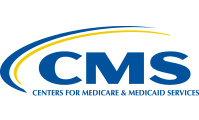Ohio Hospital for Psychiatry offers effective, comprehensive treatment for individuals struggling with schizoaffective disorder. Learn more about the signs and symptoms of schizoaffective disorder.
What is Schizoaffective Disorder
Learn More About Schizoaffective Disorder
Schizoaffective disorder is a very serious mental illness that presents itself with features that can resemble both schizophrenia and another mood disorder. People with schizoaffective disorder will experience things such delusions and hallucinations, which are typical symptoms of schizophrenia, along with significant mood disturbances like depression and mania. The National Alliance on Mental Illness (NAMI) states that schizoaffective disorder is predominantly thought to lie between a diagnosis of bipolar disorder and a diagnosis of schizophrenia, as it presents with symptoms of both. Schizoaffective disorder is under consistent debate within the psychiatric community due to the fact that it consists of such a wide array of symptoms. It is not as well defined or as well understood as other mental illnesses. It is also thought to be misdiagnosed in many circumstances. However, NAMI reports that most experts in the field identify schizoaffective disorder as being a type of chronic mental illness that has psychotic symptoms at the core, with manic and depressive symptoms that present as a secondary component. While they are considered secondary, the manic and depressive symptoms are considered to be just as debilitating as the psychotic symptoms. There is hope for those suffering from Schizoaffective Disorder with proper treatment.
Statistics
Statistics of Schizoaffective Disorder
It is believed that schizoaffective disorder is approximately one-third as common as schizophrenia, leaving it with a lifetime prevalence of 0.3%. The disorder is said to be more prevalent in women than it is in men, as two-thirds of people diagnosed with schizoaffective disorder are women.
Causes and Risk Factors
Causes and Risk Factors for Schizoaffective Disorder
As is true for the majority of mental disorders, there is not one single identifiable cause that leads to the onset of schizoaffective disorder. Instead, a combination of factors are believed to work in combination with one another to ultimately lead to the development of the disorder.
Genetic: Like most mental disorders, schizoaffective disorder is believed to have a genetic component present in its development. A person who has a first degree relative (such as a biological parent or sibling) who is suffering from schizoaffective disorder, bipolar disorder, or schizophrenia is more likely to develop the illness than someone who does not have a family history of any of the aforementioned illnesses.
Physical: People suffering from schizoaffective disorder have been noted as having smaller brain volumes in comparison to a typical brain. Neuroimaging studies have also shown that there are structural differences in the brain composition itself in people who have schizoaffective disorder. It has also been reported that people who have brain developmental delays may run the risk of developing the disorder as well.
Environmental: Scientists believe that when a fetus is exposed to toxins or viral illnesses while in the womb, they become more susceptible to developing schizoaffective disorder. Some scientists also believe that birth complications can add to one’s susceptibility of developing the illness. Other environmental factors, such as being the victim of chronic abuse and neglect, may also play a role in the onset of the disorder due to the emotional turmoil that such situations inflict on a person. Risk Factors:
- Family history of mental illness (especially when having first-degree relatives who have schizoaffective disorder, bipolar disorder, or schizophrenia)
- The presence of other mental health disorders
- Substance abuse
- Having been the victim of abuse and/or neglect
- Developmental delays
- Prenatal exposure to certain toxins or illnesses (including drugs and alcohol)
Signs and Symptoms
Signs and Symptoms of Schizoaffective Disorder
Due to the fact that schizoaffective disorder is so widely misunderstood, the ways in which it has been recognized as presenting itself are also somewhat misunderstood. The common belief, however, is that the symptoms of schizoaffective disorder will somewhat mimic the symptoms that are present in both bipolar disorder and schizophrenia. The way in which these symptoms actually present in individuals will vary greatly from person to person depending on his or her genetic makeup, personality traits, history of substance abuse, and the presence of any other co-occurring disorders. The presentation of these symptoms will also rely heavily on whether or not the person suffering from the disorder is in a depressive state, a manic state, or a mixed state. The most common symptoms that have been linked to the diagnosis of schizoaffective disorder include: Behavioral symptoms:
- Disorganized speech or the absence of speech entirely
- Disorganized behaviors
- Catatonic behaviors
- Impaired social functioning
- Impaired occupational functioning
- Alternating between slow and rapid movements
- Social isolation
- Self-harm
- Attempting suicide
Physical symptoms:
- Changes in physical appearance (i.e. no longer caring how one looks)
- Poor personal hygiene
- Changes in sleep and/or eating patterns
- Significant weight gain or weight loss
- Lacking emotional expression
Cognitive symptoms:
- Hallucinations
- Delusions
- Memory impairments
- Racing thoughts
- Difficulty paying attention
- Difficulty planning
- Disorganized thinking
Psychosocial symptoms:
- Major episodes of depression
- Major episodes of mania
- Extreme paranoia
- Poor motivation
- Anxiety
- Grandiose self-esteem or poor self-esteem
- Suicidal ideation
Effects
Effects of Schizoaffective Disorder
When schizoaffective disorder goes untreated, or is misdiagnosed which leads to improper treatment, the long-term effects of the illness can be detrimental. Some examples of these effects can include, but are not limited to:
- Self-harming behaviors
- Substance abuse
- Unemployment
- Financial instability
- Loss of significant relationships
- Family discord
- Significant health problems
- Suicidal ideation and/or behaviors
- Early death
Co-Occurring Disorders
Co-Occurring Disorders of Schizoaffective
People suffering from schizoaffective disorder have the potential to be suffering from another mental illness as well. The three disorders that are most frequently diagnosed along with schizoaffective disorder include:
- Substance abuse disorders
- Anxiety disorders
- Post-traumatic stress disorder (PTSD)






